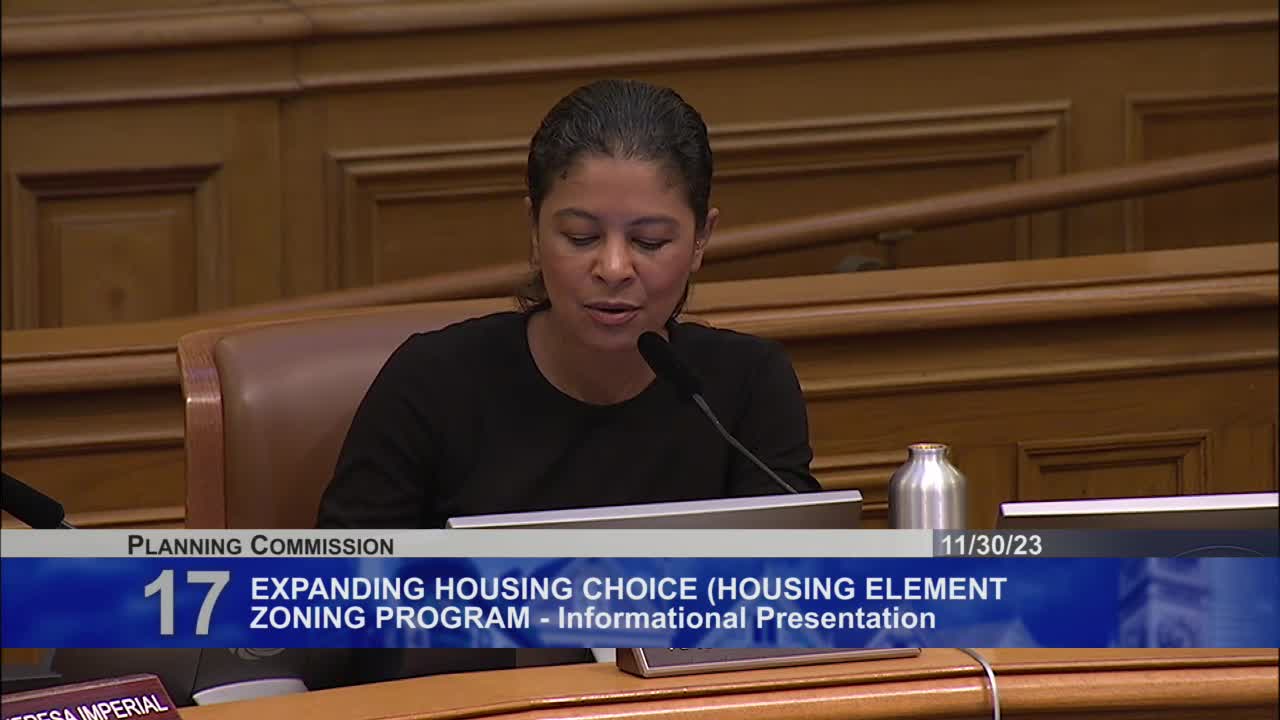City Council reviews fourplex and sixplex legislation amid housing development concerns
November 30, 2023 | San Francisco City, San Francisco County, California
This article was created by AI summarizing key points discussed. AI makes mistakes, so for full details and context, please refer to the video of the full meeting. Please report any errors so we can fix them. Report an error »

In a recent San Francisco government meeting, discussions centered on the city's ongoing housing development initiatives, particularly the controversial elimination of buffer zones in zoning regulations. As the city moves from phase two to phase three of its rezoning efforts, officials are grappling with the implications of these changes on housing accessibility and density.
One key speaker expressed disappointment over the removal of buffer zones, arguing that it limits the effectiveness of the new fourplex and sixplex legislation. "The economy is terrible. Interest rates are awful, and everything's very expensive to build," they noted, emphasizing that the one-year ownership requirement restricts access to these housing options for many property owners. The speaker advocated for maintaining buffer zones to allow for increased density without altering building heights, suggesting that this could better align with existing neighborhood structures.
City officials responded by acknowledging the need to prioritize opportunity sites in the current phase of rezoning while keeping the door open for future discussions on buffer zones. They highlighted the importance of community feedback, noting that opinions varied widely among residents, with younger renters generally favoring taller buildings while older homeowners preferred lower heights.
The conversation also touched on the need for objective design standards, particularly regarding residential entries and balconies. Officials indicated that they are considering options for at-grade entries to improve accessibility for individuals with mobility issues. Additionally, there was a call for more visually appealing designs for blank walls in new developments, suggesting that texture or other aesthetic enhancements could be incorporated.
As the city continues to navigate these complex housing challenges, the outcome of these discussions could significantly impact San Francisco's housing landscape and its ability to meet the needs of its diverse population. The next steps will involve further analysis of financial feasibility and continued community engagement to refine the proposed zoning changes.
One key speaker expressed disappointment over the removal of buffer zones, arguing that it limits the effectiveness of the new fourplex and sixplex legislation. "The economy is terrible. Interest rates are awful, and everything's very expensive to build," they noted, emphasizing that the one-year ownership requirement restricts access to these housing options for many property owners. The speaker advocated for maintaining buffer zones to allow for increased density without altering building heights, suggesting that this could better align with existing neighborhood structures.
City officials responded by acknowledging the need to prioritize opportunity sites in the current phase of rezoning while keeping the door open for future discussions on buffer zones. They highlighted the importance of community feedback, noting that opinions varied widely among residents, with younger renters generally favoring taller buildings while older homeowners preferred lower heights.
The conversation also touched on the need for objective design standards, particularly regarding residential entries and balconies. Officials indicated that they are considering options for at-grade entries to improve accessibility for individuals with mobility issues. Additionally, there was a call for more visually appealing designs for blank walls in new developments, suggesting that texture or other aesthetic enhancements could be incorporated.
As the city continues to navigate these complex housing challenges, the outcome of these discussions could significantly impact San Francisco's housing landscape and its ability to meet the needs of its diverse population. The next steps will involve further analysis of financial feasibility and continued community engagement to refine the proposed zoning changes.
View the Full Meeting & All Its Details
This article offers just a summary. Unlock complete video, transcripts, and insights as a Founder Member.
✓
Watch full, unedited meeting videos
✓
Search every word spoken in unlimited transcripts
✓
AI summaries & real-time alerts (all government levels)
✓
Permanent access to expanding government content
30-day money-back guarantee

